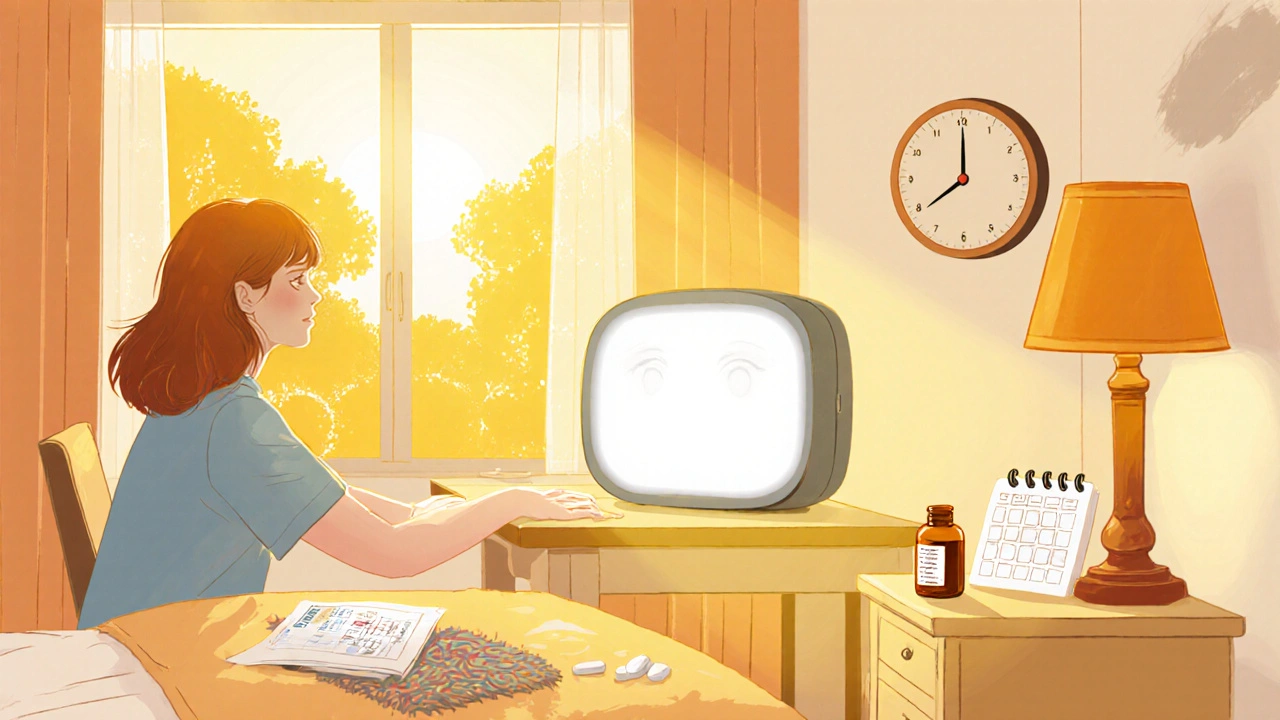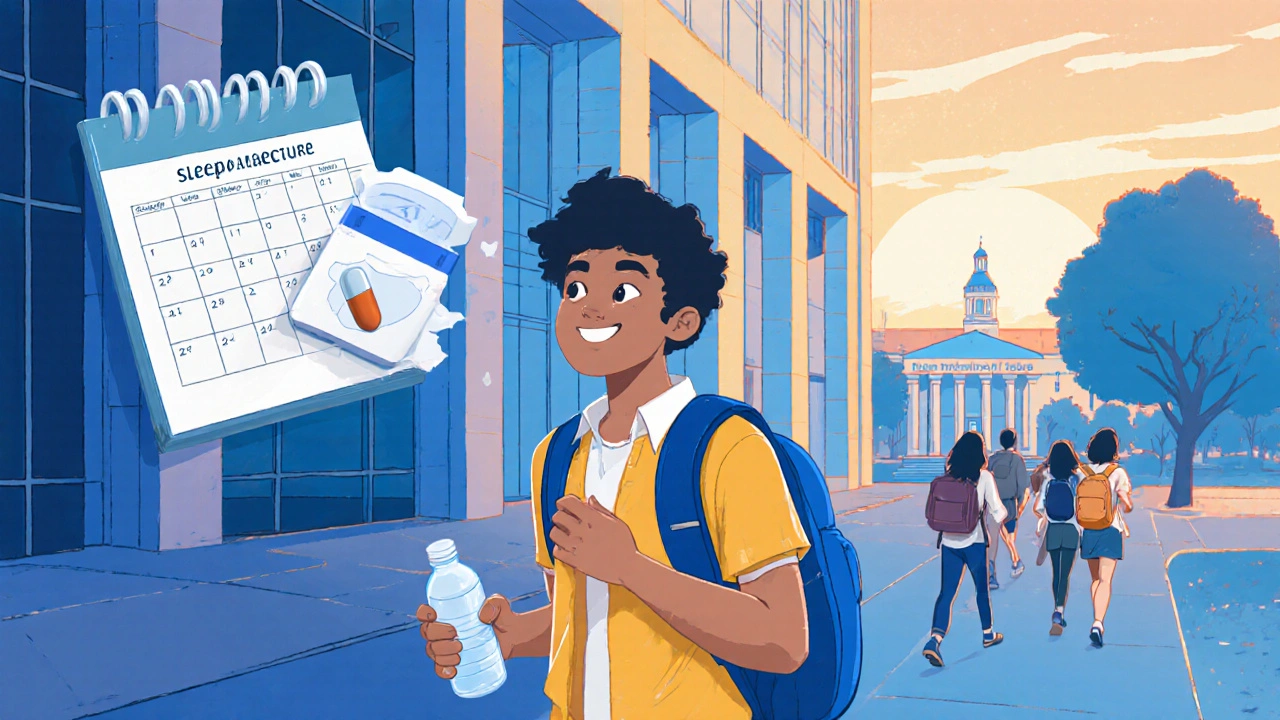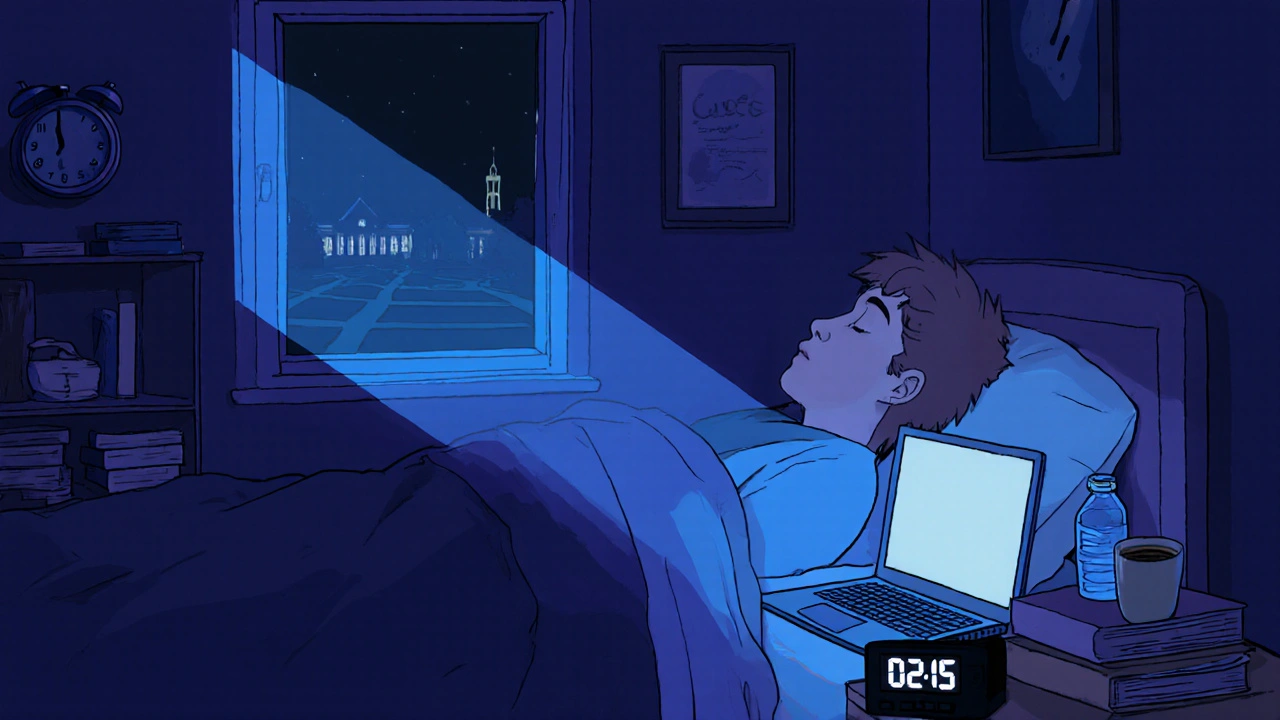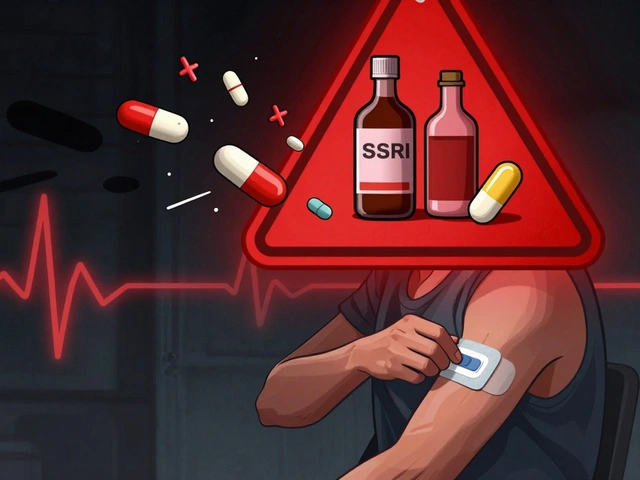Sleep Phase Shift Calculator
When dealing with Delayed Sleep Phase Syndrome is a disorder of the circadian clock that pushes sleep onset to late night hours, often past 2am, making early‑morning wake‑ups extremely difficult, many college students feel stuck in a cycle of sleep deprivation and missed classes. The good news is that the condition can be managed with a combination of lifestyle tweaks, timed light exposure, and, when needed, professional guidance.
Quick Takeaways
- DSPS shifts your natural sleep window later, clashing with typical class schedules.
- Identify the syndrome early by tracking sleep patterns for at least two weeks.
- Use morning bright‑light exposure and evening dim‑light strategies to shift your clock.
- Melatonin taken at the right time can reinforce the shift.
- Consistent daily routines, even on weekends, are essential for lasting change.
What Is Delayed Sleep Phase Syndrome and Why Does It Matter for Students?
DSPS is a type of Circadian Rhythm the internal 24‑hour biological clock that regulates sleep‑wake cycles, hormone release, and body temperature. When the rhythm is delayed, the body’s sleep‑pressure builds later in the evening, so falling asleep before 2am feels impossible. In a college setting, where lectures, labs, and social events often start before 9am, this misalignment can lead to chronic sleep debt, reduced concentration, and poorer academic performance.
Surveys of university populations show that up to 8% of students meet criteria for DSPS, and many more report “night‑owl” tendencies that border on the disorder. The impact isn’t just fatigue; studies link chronic mis‑timing to mood disturbances, weakened immune response, and even increased risk of metabolic issues.
How College Life Makes the Clock Tick Wrong
Typical student habits-late‑night study sessions, binge‑watching, and heavy caffeine use-expose the brain to bright light when it should be winding down. The blue‑light spectrum emitted by phone screens and laptop monitors is especially potent at suppressing melatonin, the hormone that signals bedtime.
Enter Blue Light short‑wavelength light that strongly influences the circadian system. When you scroll through social media at 11pm, you’re essentially telling your brain that it’s still daytime, pushing the sleep window further back. Combine that with irregular weekend sleep‑ins, and the body’s internal clock gets a severe backlog.

Core Strategies to Realign Your Clock
The goal is to create a predictable pattern of light exposure, darkness, and melatonin signaling that nudges the circadian rhythm earlier. Below are the most evidence‑backed tools.
1. Morning Bright‑Light Therapy
Bright‑light boxes delivering 10,000 lux for 20‑30minutes each morning can advance the sleep phase by up to two hours per week. Position the box about a foot from your face, eyes open but not looking directly at the light. Consistency is key-do it at the same time daily, even on weekends.
2. Timed Melatonin Supplementation
Melatonin a hormone produced by the pineal gland that signals darkness to the body taken 3-5hours before your desired bedtime can help shift the clock earlier. Start with a low dose (0.5mg) and adjust under guidance from a campus health professional.
3. Sleep Hygiene Adjustments
Sleep Hygiene practices that promote consistent, restful sleep includes:
- Dim the lights after 8pm; use amber‑tinted bulbs or apps that filter blue light.
- Keep the bedroom cool (around 18°C) and quiet.
- Avoid caffeine after 2pm and heavy meals close to bedtime.
- Reserve the bed for sleep only-no studying or scrolling.
4. Consistent Daily Schedule (Even on Weekends)
Try to wake up and go to bed within a one‑hour window every day. A regular schedule stabilizes the Chronotype an individual’s natural preference for sleep timing, making it easier for the body to settle into a new, earlier rhythm.
5. Social Rhythm Management
Plan social activities around your new sleep window. If you’re shifting to a 10pm‑6am schedule, schedule group study sessions or outings earlier in the evening.
Comparing the Main Tools
| Strategy | Typical Advance (hours/week) | Ease of Use | Cost | Best For |
|---|---|---|---|---|
| Morning Bright‑Light Therapy | 1-2 | Medium (requires daily 30‑min session) | £80‑£150 for a box | Students with regular morning classes |
| Melatonin Supplement | 0.5-1 | Easy (pill before bedtime) | £10‑£20 per month | Those who need a gentle nudge |
| Sleep Hygiene Changes | 0.3‑0.8 | Variable (depends on habit change) | Free‑to‑low | All students, foundation step |
| Consistent Schedule | 0.5‑1.5 | Medium (requires discipline) | Free | Students with flexible class times |
Apps and Gadgets That Can Help
Several free or low‑cost apps track sleep phases and remind you when to get light exposure. Popular choices among students include:
- SleepCycle - uses phone microphone to estimate sleep stages and suggests optimal wake‑up times.
- f.lux - automatically shifts screen color temperature after sunset.
- Daylight - a simple sunrise alarm that simulates dawn for gentle waking.
Pair an app with a wearable (e.g., a basic fitness tracker) to monitor sleep duration and consistency. Seeing the data visualized often motivates students to stick to the plan.

When to Seek Professional Help
If you’ve tried the above steps for four weeks and still struggle to attend morning lectures, it’s time to consult Campus Health Services the university’s medical center that offers sleep assessments and counseling. They can run a formal circadian rhythm evaluation, prescribe higher‑dose melatonin if appropriate, or refer you to a sleep specialist.
In rare cases, DSPS may coexist with other sleep disorders such as insomnia or obstructive sleep apnea. A professional can rule out these conditions and tailor a comprehensive treatment plan.
Key Takeaway for the Busy Student
The key to handling Delayed Sleep Phase Syndrome in college is consistency: a daily dose of bright light, a well‑timed melatonin pill, and a night‑time routine that tells your brain it’s time to wind down. Stick to the schedule even on weekends, and you’ll gradually shift your internal clock forward enough to catch those 8‑hour sleep blocks you need for classes, labs, and a social life.
Frequently Asked Questions
How long does it take to shift my sleep phase?
Most students see a 1‑hour advance after two weeks of consistent light‑therapy and sleep‑hygiene practices. Full adjustment (2‑3hours) typically requires 4-6 weeks.
Is melatonin safe for long‑term use?
Low‑dose melatonin (0.5‑3mg) taken a few days a week is generally considered safe for adults. Always discuss higher doses or daily use with a health professional.
Can I skip weekends and still fix DSPS?
Irregular weekend sleep creates a “social jetlag” that reverses progress. Aim to keep wake‑up times within an hour of your weekday schedule, even on free days.
What if my classes start at 8am?
Combine an early‑morning light box with a slightly earlier melatonin dose (about 5hours before the target bedtime). Gradually pull bedtime earlier by 15‑30minutes every few days.
Do I need a doctor’s prescription for light therapy?
No prescription is required for over‑the‑counter light boxes, but a health professional can help you choose the right intensity and timing.



Emily (Emma) Majerus on 17 October 2025, AT 14:20 PM
Hey, try setting a consistent wake‑up alarm even on weekends – it tricks your clock into thinking it’s always class‑day time.